by Jon R. Sank
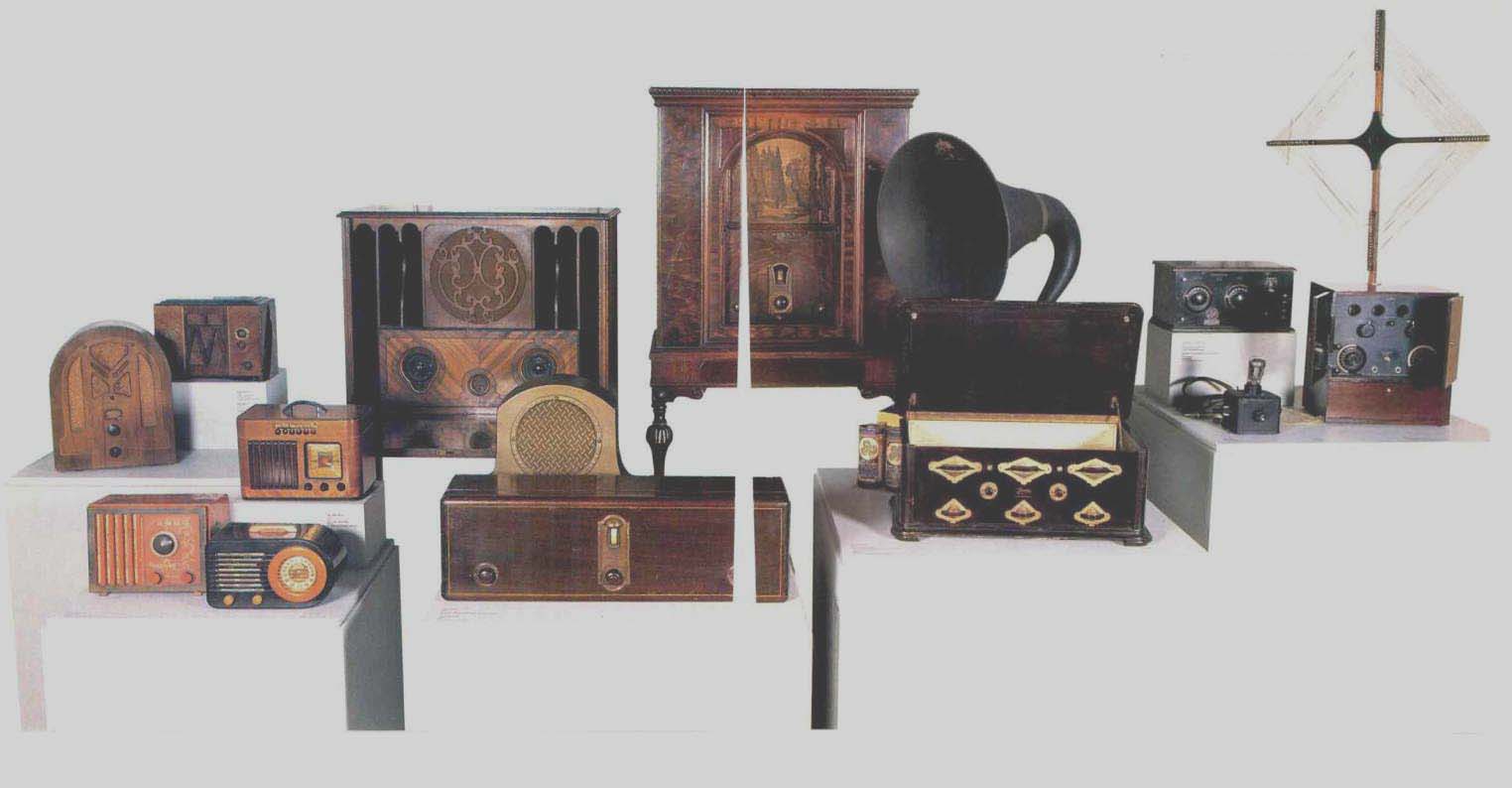
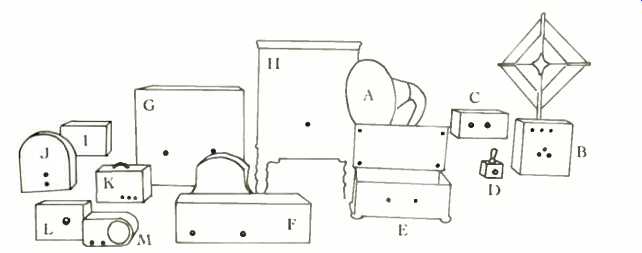
above: The changing lace of radio receivers, 1921 to 1941 (see above
image)
A. Magnavox R-2 horn speaker (c. 1921). COURTESY OF DELAWARE COUNTY INSTITUTE OF SCIENCE, JOI-IN WORK COLLECTIONS.
B. DeForest D-10 (1922). COURTESY OF PENNSYLVANIA HISTORICAL ANI) MUSEUM COMMISSION.
C. Transcontinental/Gimbel Blathers Type ZR-4 (1924). COURTESY OF RALPH AND ELINOR WILLIAMS.
D. Crosley single-tube Pup (1925). COURTESY OF BILL AND JANE DENK.
E. Grebe Synchrophase (1925; see separate photo).
F. RCA Radial,' 17 with matching Model 100A speaker (1927). COURTESY OF RALPH AND ELINOR WILLIAMS.
G. Atwater Kent Model 44 "highboy" in Red Lion cabinet (1928). COURTESY OF RALPH AND ELINOR WILLIAMS.
H. Philco Model 95 "highboy" (c. 1929). COURTESY OF BILL AND JANE DENK.
I. Atwater Kent Model 275 (c. 1955). COURTESY OF RALPI-I AND ELINOR WILLIAMS.
J. RCA Victor Model 4-T “cathedral"-style set (c. 1933). COURTESY OF BILL AND JANE DENK.
K. Philco Model 10-125 (c. 1959). COURTESY OF ATWATER KENT MUSEUM, ESTATE OF ROBERT C. ALEXANDER.
L. RCA Model 75X18 (c. 1940). COURTESY OF RALPH AND ELINOR WILLIAMS.
M. F.A.U. Andrea Model 1000 with Art Deco design and plastic case (c. 1941). COURTESY OF BILL AND CAROL DIGEL.
"Sit back, relax ... turn on your imagination, and pull your easy chair closer to the Atwater Kent's tapestry-covered speaker." These words were heard nightly in 38 states as Gary Hodgson introduced his show Radio Classics on clear-channel WCAU-AM in Philadelphia. (The program ended when the station changed hands in 1990.) Hodgson's loyal fans, scattered throughout the eastern and central states, demonstrated that people of all ages are discovering or rediscovering the magic of early radio. I especially enjoyed his rebroadcasts of radio drama, and I learned that the "picture" was much better on radio than on television because it was in my mind. Of course, audiophiles know that listening to radio or recordings permits you to do useful tasks at the same time, thus preventing you from becoming a tube turnip.
Hodgson promoted and participated in a splendid exhibit of early radio receivers at the Atwater Kent Museum in Philadelphia. The exhibit honored the 50th anniversary of the museum's founding by radio magnate A. Atwater Kent, as well as n8 years of service by his son A. Atwater Kent, Jr., as its founding president and later president emeritus. This is Philadelphia's history museum, and radios usually account for only a small portion of the items on display, but they were the stars o` Tune In the Victor Talking Machine Co. plant in 1929 and began manufacturing radios itself, whereas before they had been built for RCA by Westinghouse and General Electric.
RCA held inventor Edwin H. Armstrong's patents for the superheterodyne and regenerative receivers in the 1920s (the company also had a monopoly on vacuum tubes until 1927). So Atwater Kent, Philco, and other competitors initially had to make tuned radio frequency (TRF) receivers. (The TRF circuit lacked selectivity but could offer higher audio fidelity than the superhet.) To compete with the more advanced superhet circuit, the TRF sets had various high-tech-sounding names, such as Neutrodyne, Synchrophase, and Radiodyne.
After the museum exhibit closed but prior to its dismantling, Audio was granted the privilege of photographing the display. The pictures here show the most popular radios of the Golden Age of Broadcasting, each representing an important milestone in the history of its manufacturer. (The notable exception is the one-of-a kind spark-gap transmitter/receiver.) I am indebted to the Atwater Kent Museum and to Curator of Exhibits John Mayer for providing detailed information on the exhibit, as well as to the owners and donors of the radios for permitting us to photograph their precious antiques.
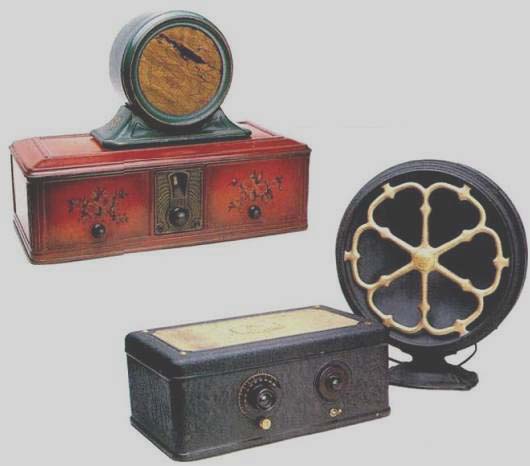
(top) Philco Neutrordyne Model 512 with Speaker Model 214 (1928): A seven-tube,
a.c.-powered TRF receiver. It was made in Philco’s first year of radio production
and cool $125. COURTESY OF RALPH ANI) ELINOR WILLIAMS.
(above) Atwater Kent Model 40 with Speaker Model E (1928): A seven-tube TRF receiver, made during all's mast productive period. This metal-cased unit sold for $77 (without tubes). COURTESY OF ATWATER KENT FOUNDATION.

--- Atwater Kent Model 3925 (1922): COURTESY OF RALPH AND ELINOR WILLIAMS.
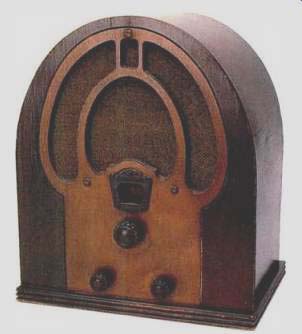
---Philco Model 81 (1933): A four-tube .superheterodyne receiver. Deigned
for low cost because of the Depression, it sold for about $125. Seventy percent
of the radios sold in 1933 were of this “cathedral" style. COURTESY
OF BILL AND CAROL DIGEL.
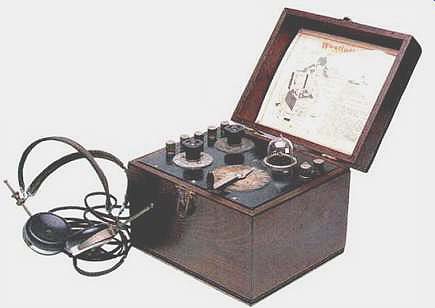
---RCA Aeriola Senior (1921): One of the most popular acts, made by Westinghouse
for RCA and costing $65. This one-tube, battery-powered regenerative receiver
required headphones. COURTESY OF RALPH AND ELINOR WILLIAMS.
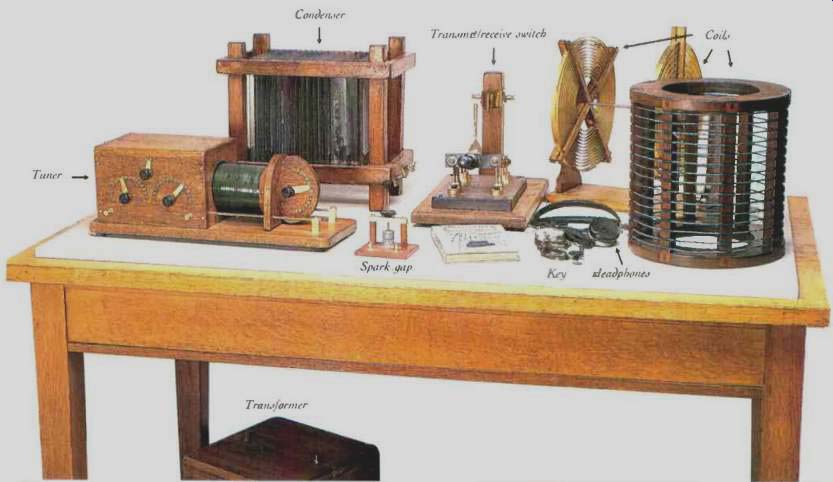
--- Spark-gap transmitter and receiver (1909): Made by 15-year-old Harry
Houck, this apparatus sent and received Morse code (CW) signal, only. When
connected to a battery, the telegraph key and the high-voltage transmitter
caused a spark to jump the gap when the key was released. The r.f. component
of this energy was tuned by the coil, and condenser and then radiated by
an antenna. A distant antenna was connected to the tuner and a crystal detector,
which transmitted audible clicks to headphones. COURTESY OF PENNSYLVANIA
HISTORICAL AND MUSEUM COMMISSION, GIFT OF HARRY HOUCK.
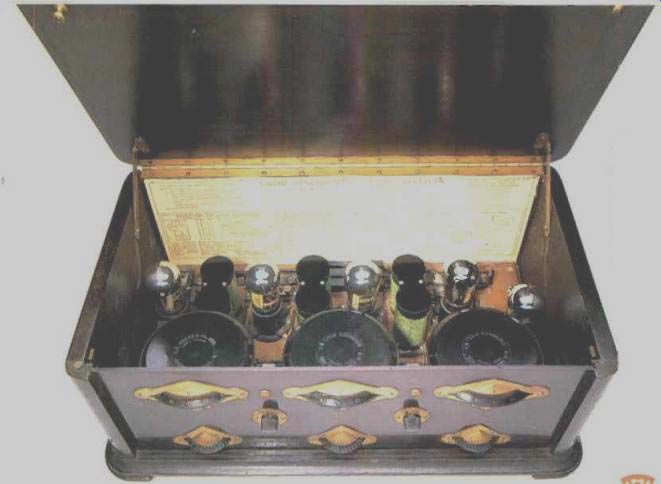
----Grebe Synchrophase (1925): A five-tube TRF set, costing $155.
It was battery powered but worked with a speaker. The name reflected c popular
interest in new technology. COURTESY OF BILL AND JANE DENK.
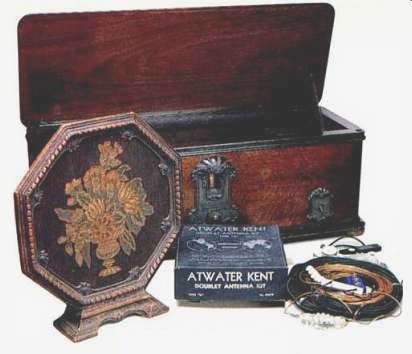
-----RCA Radiola 60 with Model 103 Speaker (1928), shown with Atwater
Kent Doublet Antenna Kit Type D (c. 1927): The first superheterodyne receiver
powered by a.c., costing $417. This nine-tube set used the newly developed
RCA beater-cathode tube (Type 27), which reduced audio burn. RADIO AND SPEAKER
COURTESY OF RALPH and ELINOR WILLIAMS. ANTENNA KIT COURTESY OF ATWATER KENT
MUSEUM.
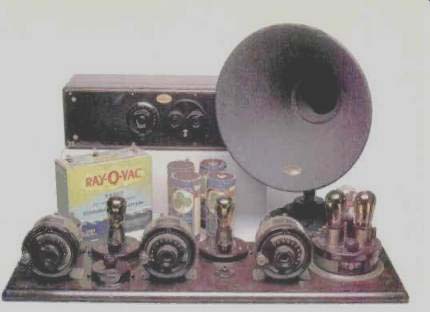
------- Atwater Kent Model 10 with Model L Speaker (1923): AK’s most
popular "breadboard"-style radio, a 5-tube, battery-powered, factory-wired
set. About 15,000 sold at $37.50 each. The Model 30 (background) was similar
but bad ganged condensers and a was housed in a cabinet.
MODEL 10 COURTESY OF ATWATER KENT MUSEUM, GIFT OF PAUL CLAPFFER IN MEMORY
OF FRANK LUDTKA. MODEL L COURTESY OF ATWATER KENT FOUNDATION. MODEL 30 COURTESY
OF RALPH AND ELINOR WILLIAMS.
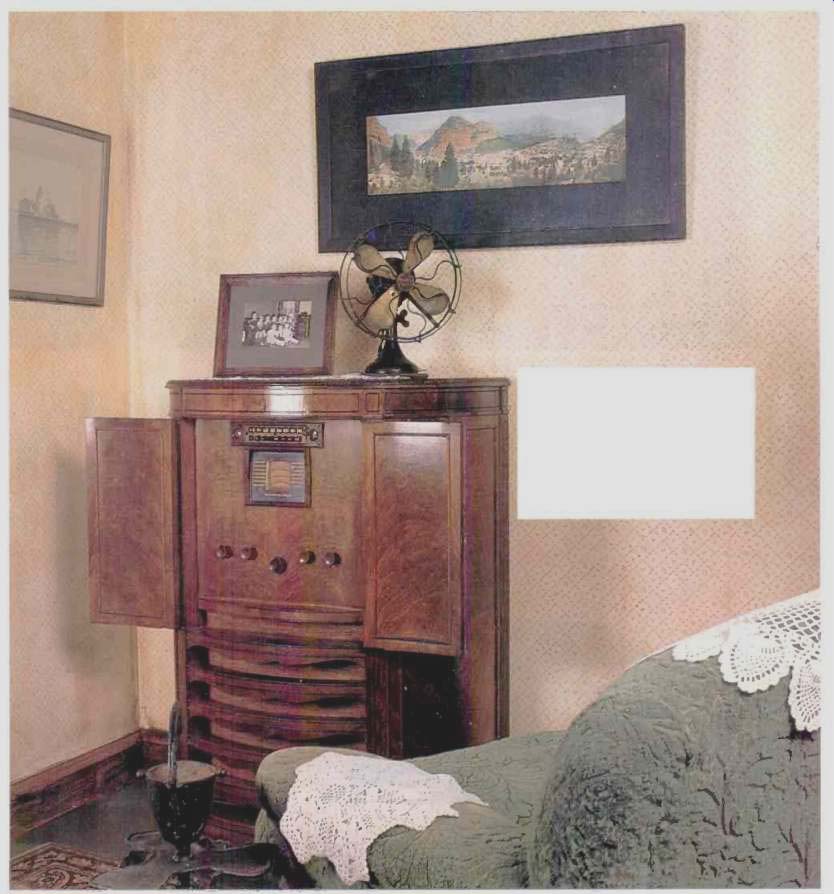
------ Stromberg-Carlson Model 420R (1939): A typical console radio,
featuring AM and short-wave bands. Courtesy ATWATER KENT MUSEUM. GIFT OF
JOSEPH DERRY.
(adapted from Audio magazine, Jan. 1992)
Also see:
Celebration of Audio's Earliest Years (May 1997)
= = = =